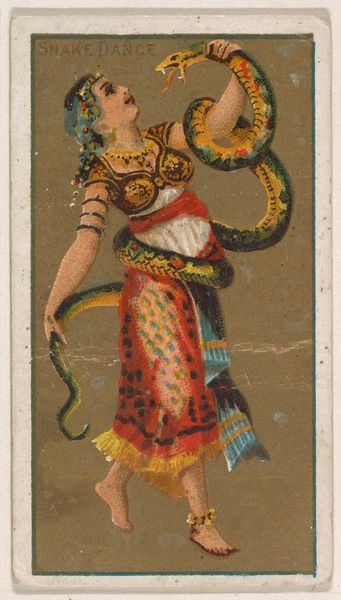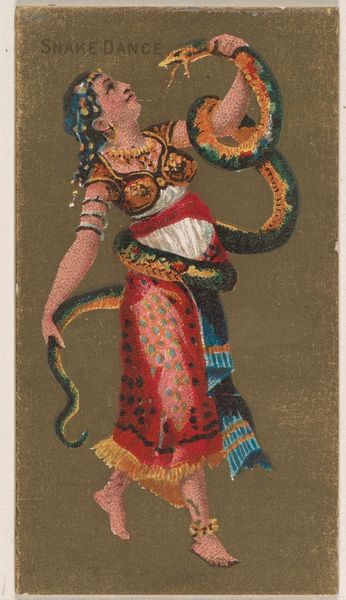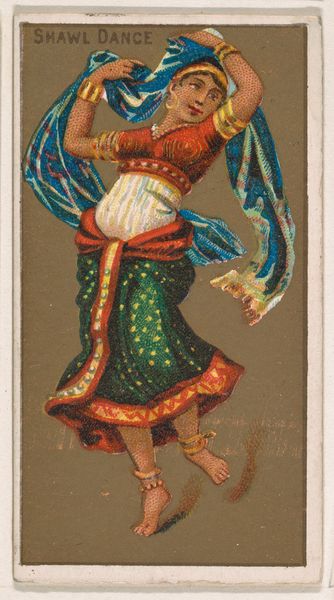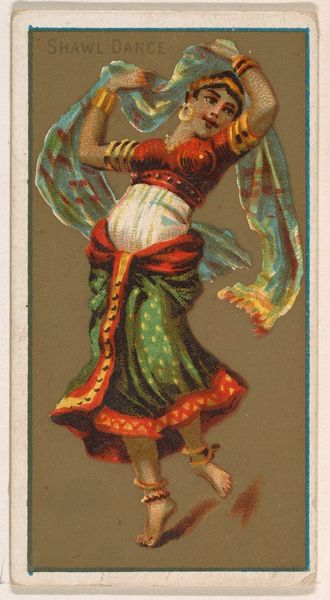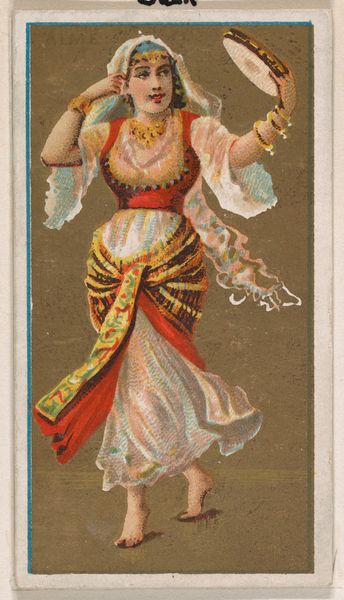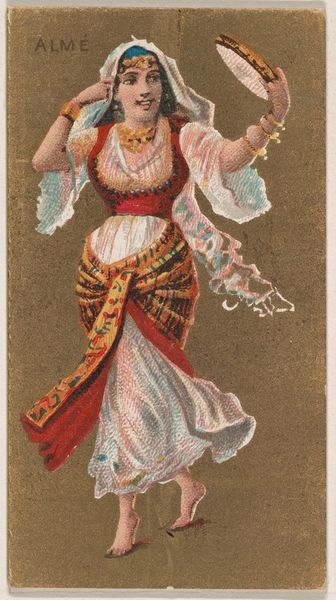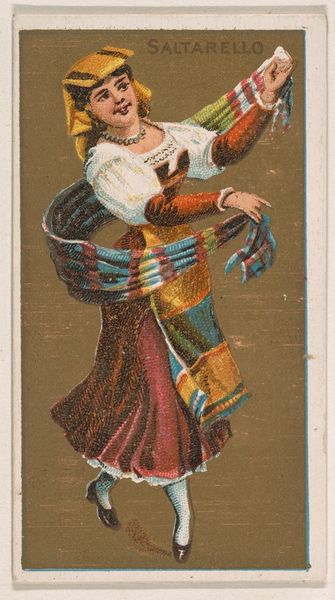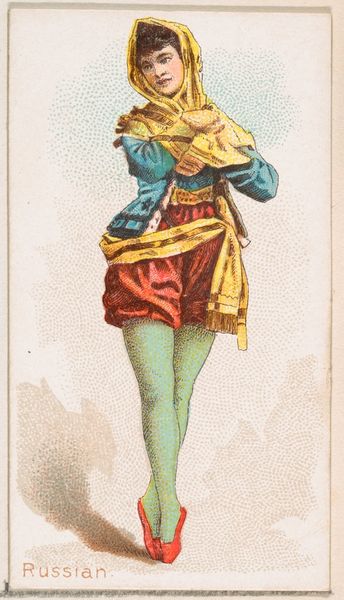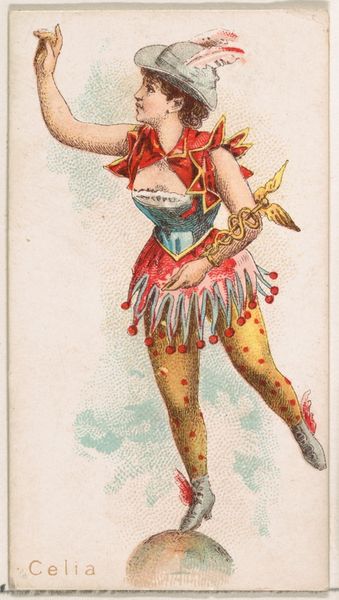
Snake Dance, from National Dances (N225, Type 1) issued by Kinney Bros. 1889
0:00
0:00
Dimensions: Sheet: 2 3/4 × 1 1/2 in. (7 × 3.8 cm)
Copyright: Public Domain
Curator: Ah, look at this! It’s an advertisement card titled "Snake Dance," a piece from the series "National Dances" issued by Kinney Brothers around 1889. What leaps out at you? Editor: Hmm…snakes and… well, what looks like an almost… colonial gaze? Is this "exotic" othering at play? The lithography seems to flatten the perspective; the patterns are dense, but the rendering is flat. Curator: Exactly, its beauty lies in its contradictions. There is an innocent charm and, you're right, a troubling undercurrent in the exoticization of this dancer and the, assumedly, foreign ritual she performs. There's this Ukiyo-e aesthetic vibe combined with a caricature... Editor: The process here is so interesting because it's this intersection of print technology and cultural attitudes during a moment of expanding global trade and consumption. I wonder who designed the drawing and made the lithographic stones. What labour processes were deployed here, do you think? Were those even local artist employed for that purpose or only artist rendering for an export-market purpose? Curator: The 'how' really impacts 'why' someone made something, doesn't it? This reminds me about how advertising cards functioned. This wasn’t just about selling tobacco. They built aspirational, imaginary worlds! This “Snake Dance” freezes that liminal space between fantasy and the real world in time. It has something surreal... Editor: Absolutely! Mass production meets exoticism, all on a tiny piece of cardboard meant to be tossed away or collected. Did the consumer consider the labor or sources behind it? Did they engage only with what was presented? Curator: That very ephemerality grants it an almost ghostly power now, a echo of a world – imagined, consumed, and, now mostly, forgotten. And a window into understanding ourselves and the process in that kind of commodified relation between maker and spectator. Editor: That is a potent way to think of it – thank you.
Comments
No comments
Be the first to comment and join the conversation on the ultimate creative platform.
